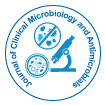

Opinion Article - (2023)Volume 7, Issue 2
Endemic diseases pose persistent health challenges that affect specific geographic regions or population groups. Unlike epidemics or pandemics, which spread rapidly and extensively, endemic diseases remain consistently present within a particular area. These diseases can cause significant long-term health challenges, social and economic burdens, and perpetuate health disparities. This study describes about endemic diseases, including their characteristics, causes, impact on public health, and the strategies employed to control and manage these persistent health challenges.
Characteristics and causes of endemic diseases
Endemic diseases are intimately linked to specific geographic regions or populations due to various factors such as climate, environment, socio-economic conditions, and cultural practices. These diseases maintain a relatively constant prevalence over time. Examples of endemic diseases include malaria, dengue fever, Chagas disease, and schistosomiasis. They can have various causes and modes of transmission. Many are caused by infectious agents such as bacteria, parasites, or viruses.
Vector-borne diseases, such as malaria and dengue fever, are transmitted through the bites of infected mosquitoes. These diseases often thrive in regions with suitable climatic conditions and where mosquito breeding sites are abundant. Water-borne diseases, including cholera and schistosomiasis, are spread through contaminated water sources. Inadequate sanitation and hygiene practices contribute to the persistence and spread of these diseases. Some diseases, like HIV/AIDS, can be transmitted through sexual contact or blood-to-blood contact.
Socio-economic factors and environmental conditions also contribute to the persistence of endemic diseases. Poverty, limited access to healthcare, inadequate sanitation and hygiene practices, and population displacement can all play a role in perpetuating and spreading these diseases. Additionally, the presence of animal reservoirs or specific ecological factors can sustain the transmission cycle of certain endemic diseases.
Impact on public health
Endemic diseases have a significant impact on public health, particularly in regions where they are endemic. They cause a substantial burden of morbidity and mortality, leading to increased healthcare costs, reduced productivity, and socioeconomic challenges. Endemic diseases often disproportionately affect marginalized populations, exacerbating health disparities and widening existing inequalities.
Chronic endemic diseases, such as malaria or schistosomiasis, can result in long-term health consequences. These diseases may cause chronic pain, organ damage, impaired cognitive development in children, and reduced life expectancy. Endemic diseases can impede economic development by limiting educational opportunities, reducing workforce productivity, and increasing healthcare expenditure.
Strategies for prevention and control
Effectively combating endemic diseases requires a comprehensive approach that addresses the multifaceted nature of these health challenges. Prevention and control strategies typically involve a combination of interventions targeting disease-carrying vectors, improving water and sanitation infrastructure, promoting hygiene practices, implementing vaccination campaigns, and strengthening disease surveillance systems.
Targeting disease-carrying vectors, such as mosquitoes or ticks, is crucial in controlling vector-borne diseases. Measures like insecticide-treated bed nets, indoor residual spraying, and environmental management play a significant role in reducing the transmission of these diseases. Access to clean water sources, proper sanitation facilities, and hygiene education are essential to prevent the transmission of water-borne diseases. Ensuring communities have access to safe drinking water and improved sanitation facilities can greatly reduce the burden of endemic diseases.
Vaccines play a critical role in preventing and controlling endemic diseases. Vaccination campaigns, such as those for polio, measles, or hepatitis B, have successfully reduced disease burdens in many parts of the world. Immunization programs are essential to protect vulnerable populations and prevent outbreaks.
Strengthening disease surveillance systems is vital for detecting outbreaks and new cases promptly. Early detection enables rapid response and effective control measures. Timely identification and monitoring of endemic diseases allow public health authorities to implement appropriate interventions and prevent further spread.
Raising awareness, promoting health education, and engaging communities in disease prevention and control efforts are crucial. Community involvement ensures sustainable changes in behavior and practices. Empowering communities with knowledge about disease transmission, prevention strategies, and the importance of seeking healthcare can significantly impact disease outcomes.
Endemic diseases are persistent health conditions that pose ongoing challenges to specific geographic regions or population groups. These diseases are deeply influenced by local factors such as climate, environment, socio-economic conditions, and cultural practices. They have a significant impact on public health, leading to increased healthcare costs, reduced productivity, and perpetuating health disparities.
Addressing endemic diseases requires a multifaceted approach that combines vector control, improved water and sanitation infrastructure, vaccination programs, disease surveillance, and community engagement. By implementing these strategies, we can mitigate the impact of endemic diseases, reduce morbidity and mortality rates, and improve the overall health and wellbeing of affected communities. Continued efforts in research, collaboration, and resource allocation are essential to overcome these persistent health challenges and create a healthier future for all.
Citation: Fgli E (2023) Persistent Health Challenges: Understanding and Confronting Endemic Diseases. J Clin Microbiol Antimicrob. 7:153.
Received: 01-Jun-2023, Manuscript No. JCMA-23-25456; Editor assigned: 05-Jun-2023, Pre QC No. JCMA-23-25456 (PQ); Reviewed: 19-Jun-2023, QC No. JCMA-23-25456; Revised: 27-Jun-2023, Manuscript No. JCMA-23-25456 (R); Published: 05-Jul-2023 , DOI: 10.35248/JCMA.23.7.153
Copyright: © 2023 Fgli E. This is an open-access article distributed under the terms of the Creative Commons Attribution License, which permits unrestricted use, distribution, and reproduction in any medium, provided the original author and source are credited.